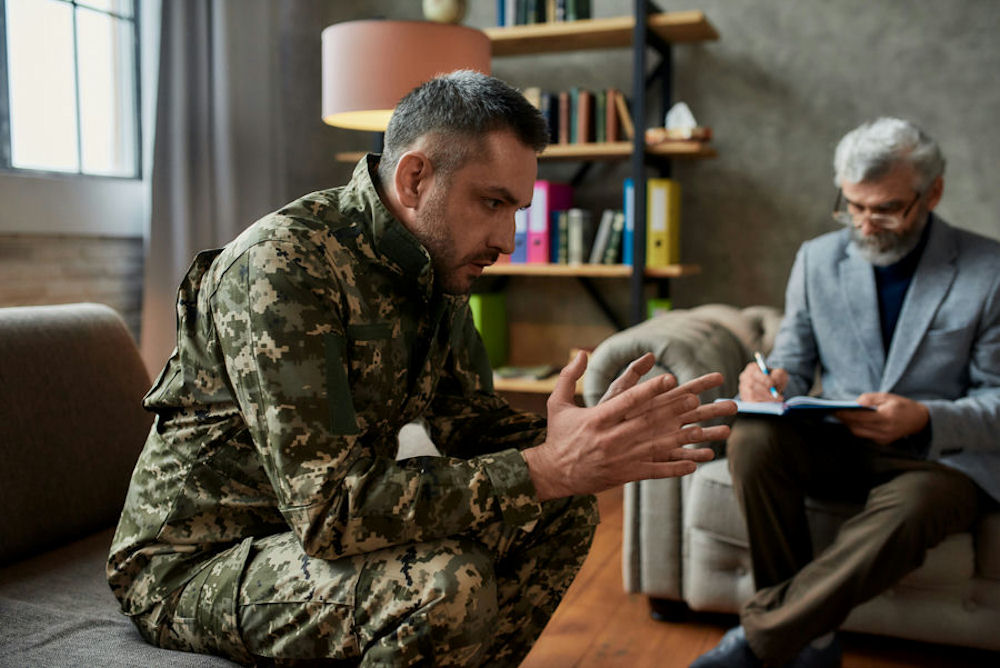Living with post-traumatic stress disorder (PTSD) presents unique challenges, particularly when it comes to identifying and managing triggers that can provoke distressing memories and symptoms. This comprehensive guide aims to provide valuable insights into understanding common PTSD triggers, recognizing the signs in oneself and others, and exploring effective strategies for coping. Whether you are seeking to enhance your own well-being or support someone else, this resource offers a thorough examination of PTSD triggers and practical approaches to address them.
What is PTSD?
Post-traumatic stress disorder, commonly known as PTSD, is a mental health condition that arises after experiencing or witnessing a traumatic event. This could be anything from military combat to natural disasters, accidents, or personal assaults. PTSD can affect anyone, regardless of age or background, and a range of symptoms, including intrusive memories, avoidance behaviors, negative changes in thinking and mood, and hyperarousal, characterize it.
PTSD isn’t just about the trauma itself; it’s about how the brain and body respond to that trauma over time. Individuals with PTSD may relive the traumatic event through flashbacks or nightmares, avoid places or activities that remind them of the event, feel constantly on edge, or experience emotional numbness. Understanding and recognizing PTSD is the first step toward getting help and managing the condition.
What are Common PTSD Triggers?
PTSD triggers are stimuli that remind a person of their traumatic experience and can cause them to re-experience symptoms of PTSD. These triggers can be anything that is linked, consciously or unconsciously, to the traumatic event. They can be categorized into several types:

These include sights, sounds, smells, or tactile sensations that remind someone of the trauma. For example, the smell of smoke can trigger memories for a fire survivor.
Certain emotions, like fear, anger, or sadness, can bring back memories of the traumatic event.
Specific places, situations, or people associated with the trauma can act as triggers. For instance, a crowded place might be a trigger for someone who experienced trauma in a similar setting.
Dates or times of year related to the traumatic event can also serve as triggers, bringing back memories and emotions tied to the trauma.
Thoughts, memories, or even dreams related to the trauma can also be significant triggers.
Understanding these triggers is crucial for individuals with PTSD and their support networks to better manage and avoid situations that might provoke distress.
How Do I Identify if Someone Has PTSD Triggers?
Identifying PTSD triggers in someone can be challenging, as it often requires sensitivity and awareness of their behaviors and reactions. Here are some key symptoms to watch for:
- Behavioral Changes: If someone suddenly avoids certain places, people, or activities without a clear reason, it might be due to a PTSD trigger.
- Emotional Reactions: Notice if they have intense emotional reactions, such as anger, fear, or sadness, that seem disproportionate to the situation.
- Physical Symptoms: Physical signs like sweating, shaking, rapid heartbeat, or shortness of breath in specific situations can indicate a trigger.
- Changes in Routine: Significant changes in sleeping or eating patterns, increased use of substances like alcohol or drugs, or withdrawal from social activities can be signs.
- Communication: If they talk about or show signs of reliving the trauma, such as mentioning flashbacks or nightmares, they might be experiencing triggers.
What are Real-world Examples of PTSD Triggers?
Understanding real-world examples can help clarify what PTSD triggers look like in everyday life.
A combat veteran might be triggered by fireworks, loud noises, or the smell of diesel fuel. These can resemble aspects of their traumatic experiences in war zones.
Someone who has been in a car accident might feel triggered by driving or even riding in a car. Passing the location of the accident can be particularly distressing.
People who have experienced a natural disaster might be triggered by weather events that remind them of their trauma. Thunderstorms or high winds can be particularly triggering.
Individuals who have been assaulted might be triggered by situations that remind them of the event. This can include walking alone at night, certain physical interactions, or particular types of clothing.
Being in environments or situations similar to where the trauma occurred can be triggering. Examples include crowded places, dark alleys, or specific locations like hospitals for someone who had a traumatic medical experience.

How Do You Cope with PTSD Triggers?
Coping with PTSD triggers involves strategies to manage the emotional and physical responses they cause. First, it is important to identify and understand triggers. Recognizing what triggers your PTSD can be achieved by keeping a journal to identify patterns and specific triggers. Once you know your triggers, the next step is to develop a coping plan. This might include having a support system in place or practicing relaxation techniques. While avoiding triggers can provide immediate relief, gradual exposure under the guidance of a therapist can help desensitize you to them over time.
Additionally, mindfulness and relaxation techniques such as meditation, deep breathing exercises, and yoga can help you stay grounded and manage stress responses. Finally, seeking professional help, especially trauma-focused cognitive-behavioral therapy (CBT), can be highly effective. Medications prescribed by a healthcare professional can also help manage symptoms.
What Are Some Grounding Exercises for PTSD Triggers?
Grounding exercises are techniques that help you stay connected to the present moment and reduce the intensity of PTSD symptoms. Here are some effective grounding exercises:

This involves using your senses to ground yourself in the present. Identify five things you can see, four things you can touch, three things you can hear, two things you can smell, and one thing you can taste.
Focus on your breath. Inhale slowly and deeply for four seconds, hold for four seconds, then exhale for four seconds. This helps regulate your nervous system.
Engage in activities that use your senses. Squeeze a stress ball, take a cold shower, or try holding a piece of ice.
Practicing mindfulness helps you stay present. You can do this by focusing on your breath, and body sensations, or simply observing your thoughts without judgment.
Engaging in simple, repetitive tasks can distract your mind from the trigger. Try counting backward from 100 or naming all the states alphabetically.
Peak Wellness offers PTSD treatment in Marlton, New Jersey
If you or someone you know is struggling with PTSD, seeking professional help is crucial. Peak Wellness, located in Marlton, New Jersey, offers comprehensive PTSD treatment programs tailored to individual needs. Our approach combines therapy, support groups, and medication management to help individuals manage symptoms and lead fulfilling lives.
Understanding and managing PTSD triggers can significantly improve the quality of life for those affected. With the right strategies and support, individuals can navigate their triggers and reclaim their peace and well-being. If you or a loved one needs help, reach out to us for compassionate and effective PTSD treatment.

